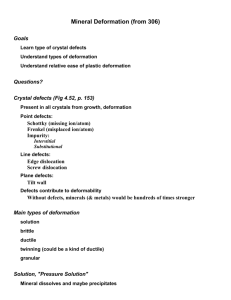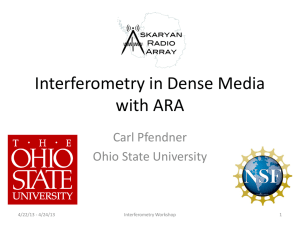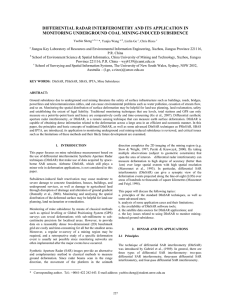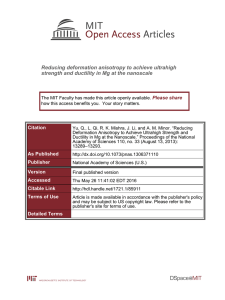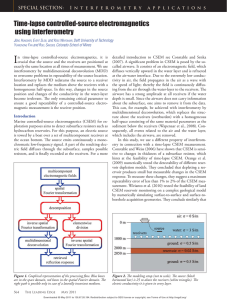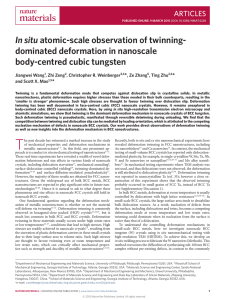Deformation Monitoring of Earth Crust and Constrain Source Parameters of... Bam (Iran) earthquake Using Interfrometric Technique of SAR Images
advertisement
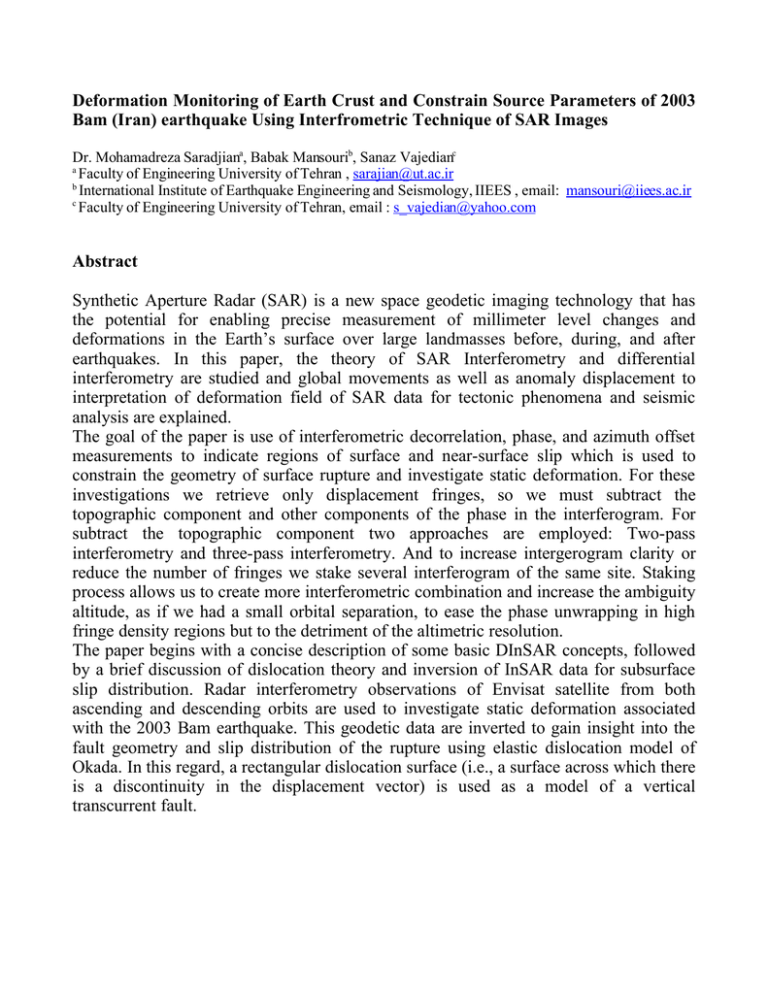
Deformation Monitoring of Earth Crust and Constrain Source Parameters of 2003 Bam (Iran) earthquake Using Interfrometric Technique of SAR Images Dr. Mohamadreza Saradjiana, Babak Mansourib, Sanaz Vajedianc a Faculty of Engineering University of Tehran , sarajian@ut.ac.ir b International Institute of Earthquake Engineering and Seismology, IIEES , email: mansouri@iiees.ac.ir c Faculty of Engineering University of Tehran, email : s_vajedian@yahoo.com Abstract Synthetic Aperture Radar (SAR) is a new space geodetic imaging technology that has the potential for enabling precise measurement of millimeter level changes and deformations in the Earth’s surface over large landmasses before, during, and after earthquakes. In this paper, the theory of SAR Interferometry and differential interferometry are studied and global movements as well as anomaly displacement to interpretation of deformation field of SAR data for tectonic phenomena and seismic analysis are explained. The goal of the paper is use of interferometric decorrelation, phase, and azimuth offset measurements to indicate regions of surface and near-surface slip which is used to constrain the geometry of surface rupture and investigate static deformation. For these investigations we retrieve only displacement fringes, so we must subtract the topographic component and other components of the phase in the interferogram. For subtract the topographic component two approaches are employed: Two-pass interferometry and three-pass interferometry. And to increase intergerogram clarity or reduce the number of fringes we stake several interferogram of the same site. Staking process allows us to create more interferometric combination and increase the ambiguity altitude, as if we had a small orbital separation, to ease the phase unwrapping in high fringe density regions but to the detriment of the altimetric resolution. The paper begins with a concise description of some basic DInSAR concepts, followed by a brief discussion of dislocation theory and inversion of InSAR data for subsurface slip distribution. Radar interferometry observations of Envisat satellite from both ascending and descending orbits are used to investigate static deformation associated with the 2003 Bam earthquake. This geodetic data are inverted to gain insight into the fault geometry and slip distribution of the rupture using elastic dislocation model of Okada. In this regard, a rectangular dislocation surface (i.e., a surface across which there is a discontinuity in the displacement vector) is used as a model of a vertical transcurrent fault.
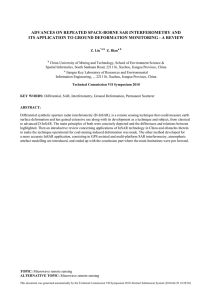
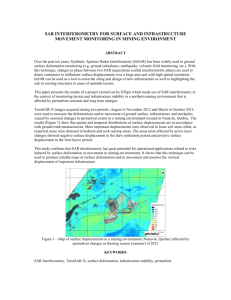

![[PS3-B.92] Deriving glacier flow of Comfortlessbreen, Svalbard, with 2-pass differential SAR interferometry](http://s2.studylib.net/store/data/011437273_1-88e0d14685f316dfdf96d3e475d13e45-300x300.png)
